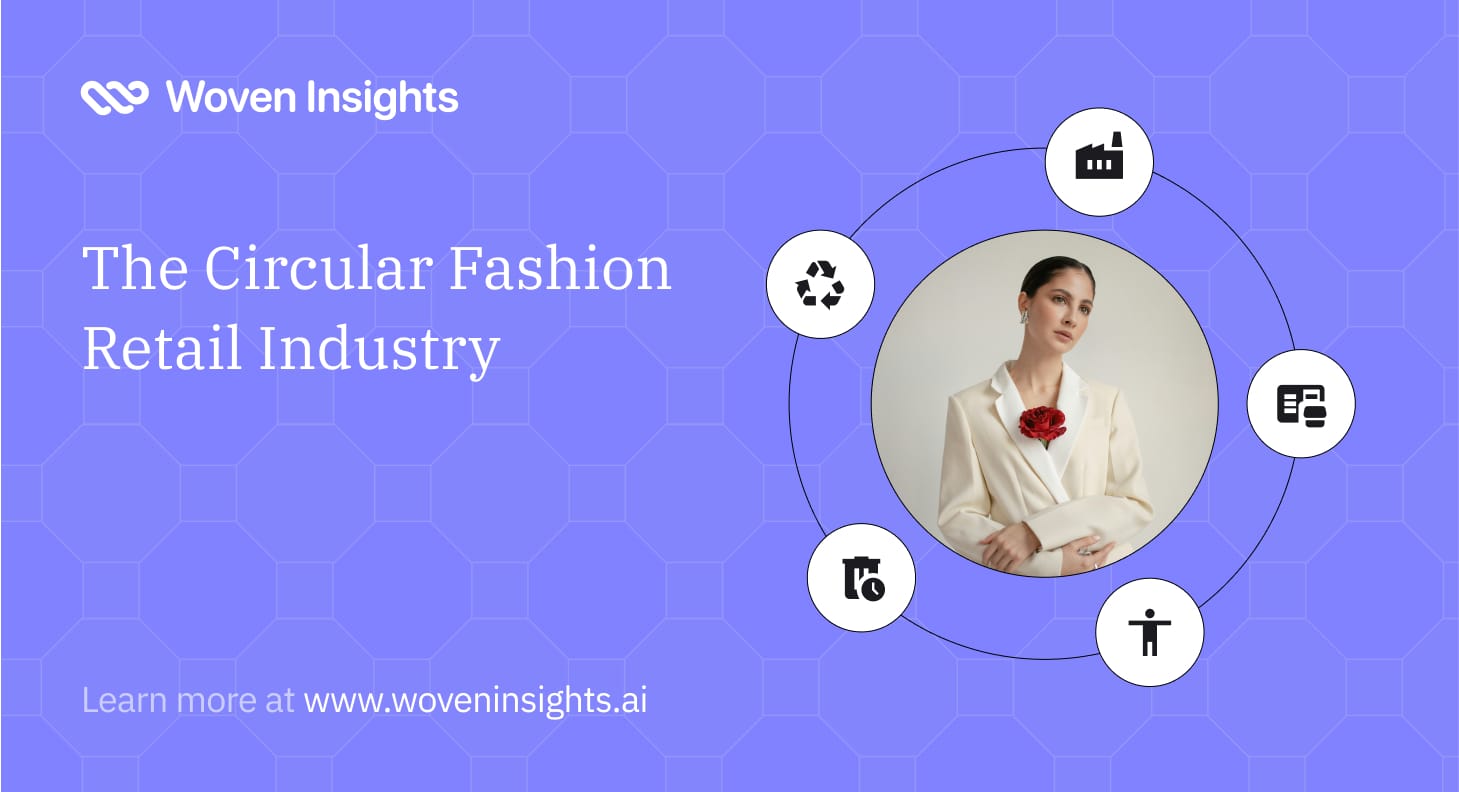The Circular Fashion Retail Industry
Circular Fashion is a model where clothing and textiles are designed, manufactured, used and eventually recycled back into the industry, rather than being discarded.

The fashion industry largely follows a linear "make-use-dispose" model, where clothing is produced, briefly worn, and discarded especially when it falls out of style. This model has resulted in vast amounts of textile waste and significant resource depletion.
However, as environmental awareness grows, both consumers and brands are increasingly turning toward Circular Fashion, a sustainable model that emphasizes reusing, repairing and recycling clothing to reduce waste and minimize environmental impact. This shift marks a movement toward more responsible and regenerative fashion practices.
What does circular fashion mean?
Circular fashion is a design philosophy and production model aimed at creating a closed-loop system within the fashion industry, where clothing and textiles are designed, manufactured, used and eventually recycled back into the industry, rather than being discarded.
This approach aligns with the principles of a circular economy, an economic system that minimizes waste by maximizing resource efficiency and keeping materials in use for as long as possible. Rather than the quick turnover of trends seen in fast fashion, circular fashion promotes long-lasting, reusable, and recyclable clothing, aiming to create a sustainable fashion model that benefits the environment, economy, and society.
For example, brands like Patagonia and Eileen Fisher are already embracing circular practices by offering repair programs and recycling garments, helping extend the life cycle of clothing.
Principles Of Circular Fashion
Circular fashion functions on several main principles:
Design for Longevity
Garments are created to be durable and timeless, reducing the need for frequent replacements. This involves selecting high-quality materials, designing for easy repair, and opting for classic, versatile styles over fleeting trends.
Reduce, Reuse, Recycle
Both brands and consumers are encouraged to adopt practices focused on reducing waste, reusing items, and reprocessing materials. Levi's for instance with its "Secondhand" initiative, offer options for buying previously owned pieces while H&M’s clothing collection program repurposes used garments.
Use of Recyclable and Renewable Materials
Circular fashion emphasizes eco-friendly materials that can be easily recycled or regenerated to help "close the loop" on waste and resource use such as using organic cotton and biodegradable fibers. Some examples of circular fashion products are Jeans made from organic cotton, Shoes made from recycled old shoes, Bags made from recycled leather, Jewels made from recycled glass.
Support for Circular Supply Chains
Circular fashion also calls for transparency in supply chains, ensuring that each step of the production process aligns with sustainable practices. This often includes ethical labor practices, fair wages, and minimizing waste and pollution in production.
What Are The Benefits Of Circular Fashion?
Environmental Impact Reduction
The fashion industry currently contributes roughly 10% of global carbon emissions, making it one of the most resource-intensive sectors worldwide. Also, textile waste generated by the industry has significant environmental impacts with vast amounts ending up in landfills each year and adding to pollution levels.
By adopting circular practices, the industry has the potential to combat climate change by reducing greenhouse gas emissions and minimizing its overall environmental footprint.
Resource Conservation
Circular fashion helps conserve resources, as less demand for new production means fewer natural resources are extracted. Studies show that circular practices could conserve significant volumes of water typically used in clothing production which would reduce strain on water-scarce regions. Buying just one pair of preloved jeans and a T-shirt, for example, saves the equivalent of 20,000 standard bottles of water.
Textile Waste Reduction
In America alone, an estimated 11.3 million tons of textile waste – equivalent to 85% of all textiles – end up in landfills on a yearly basis. That’s about 37 kilograms per person per year.
In a circular fashion model, garments and textiles are repurposed and recycled, directly addressing the immense waste generated by the fashion industry. Circular fashion promotes a closed-loop system where products are kept in use for as long as possible, reducing waste and the need for new resources.
Cost Saving
Embracing circular fashion can lead to significant cost savings by reducing the need for raw materials through recycling and reuse which lowers production costs. Additionally, extending product lifespan and reducing waste disposal fees can further help businesses optimize their resources and minimize operational expenses.
How Can Shoppers Support Circular Fashion?
Choosing quality over quantity
This basically means investing in durable items that last longer, reducing the need to replace fast fashion pieces. Although they may cost more initially, high-quality clothes save money in the long run by lasting longer and often being made with more sustainable materials, promoting a more environmentally friendly wardrobe.
Repairing and maintaining clothing
Performing simple repairs or washing items less frequently, can significantly extend the life of your wardrobe, reducing the need for constant replacements.
Buying secondhand
This is an effective way to engage in circular fashion, giving pre-owned garments a second life and reducing waste in the process
Clothing Swaps & Rentals
Participating in clothing swaps or rentals offers a fresh way to enjoy "new" pieces without contributing to overconsumption.
Buying From Circular Fashion Brands
Supporting brands with circular practices means choosing companies that promote sustainability through initiatives like using recycled materials, offering repairs, or designing products for longevity. Look for brands that are transparent about their circular fashion efforts, aligning with your sustainability goals while reducing waste..
Is The Future Of Fashion Circular?
The future of circular fashion looks promising as both consumers and brands continue to embrace sustainability. With growing awareness about the environmental impact of fast fashion, circular fashion is gaining momentum through its focus on reusing, recycling, and redesigning.
This shift provides significant environmental and business benefits, such as reducing textile waste, lowering carbon emissions, and extending the lifecycle of clothing.
Consumer demand for sustainable fashion is driving the rise of circular practices, with the resale and rental markets expanding rapidly. Research by ThredUp and Global Data shows that the resale market alone is expected to grow 11 times faster than traditional retail, reaching a projected value of $84 billion by 2030.
More brands are embracing circular fashion by designing for longevity, encouraging repairs, and using Fashion Business Intelligence tools to reduce overproduction. Businesses that align with these sustainability goals will not only reduce their environmental footprint but also gain a competitive edge in an evolving market.
About Woven Insights
Woven Insights is a comprehensive market analytics solution that provides fashion brands with real-time access to retail market and consumer insights, sourced from over 70 million real shoppers and 20 million analyzed fashion products. Our platform helps brands track market trends, assess competitor performance, and refine product strategies with precision.
Woven Insights provides you with all the actionable data you need to create fashion products that are truly market-ready and consumer-aligned.
Click on the Book a demo button below to get started today.

